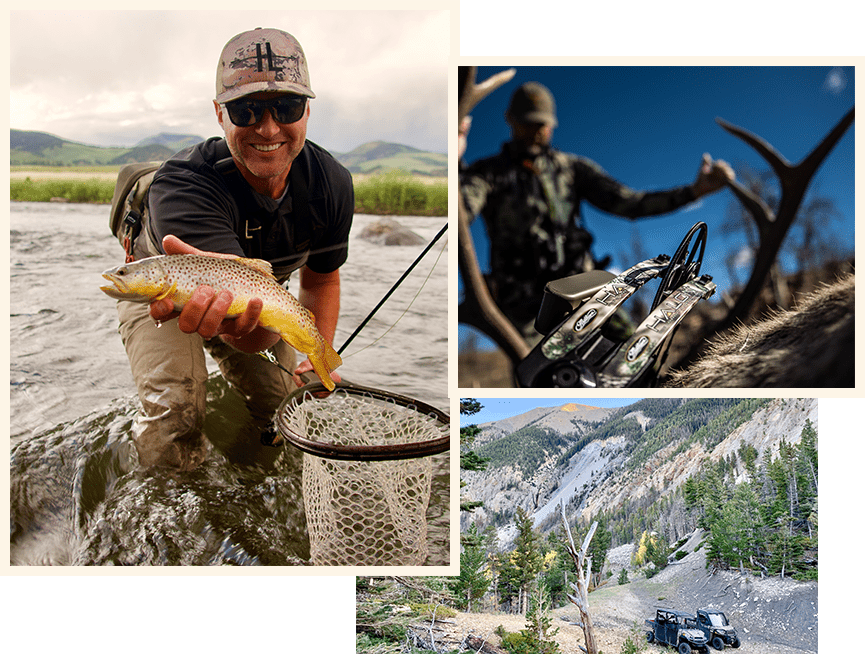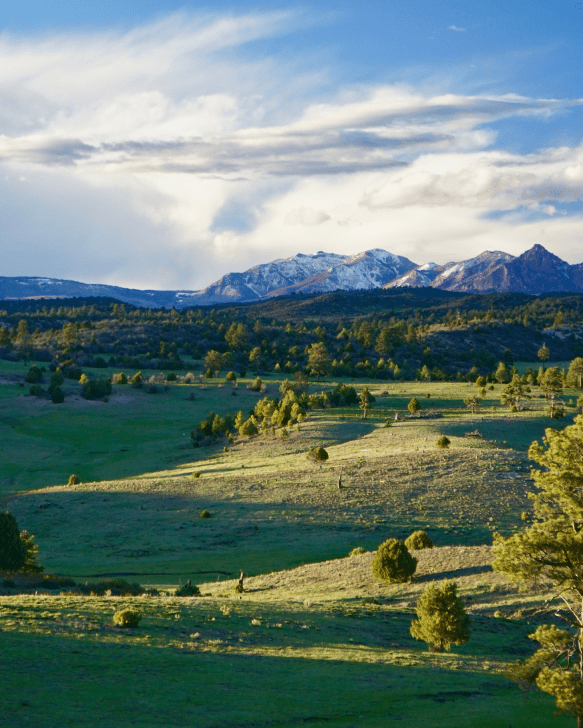Spring fishing on fly fishing properties and ranches for sale in the Rockies can be really good. Or it can be an exercise in humility. It all depends, of course, on the water, and how much of it you’ll have to deal with.
For ranch real estate owners, and investors looking for ranches for sale, winter snow is always something to consider. Too little high-country snow can mean a lean summer for livestock and hay crops. Too much, and it could mean high water into summer. This can be problematic for everything from ranch maintenance to livestock movement.
The same holds true for anglers. Too little winter snow can spell trouble for summer fishing. Our favorite trout waters might be too skinny and too warm to effectively fish come summer. Too much, and high water can eat away at our precious fishing season.
We can’t control the weather or high-elevation snow accumulations. But we can control our fishing, at least when it comes to the flies we have on hand when we hit the water come spring. Here are five fly patterns you should have in your box as you prepare to hit the water.
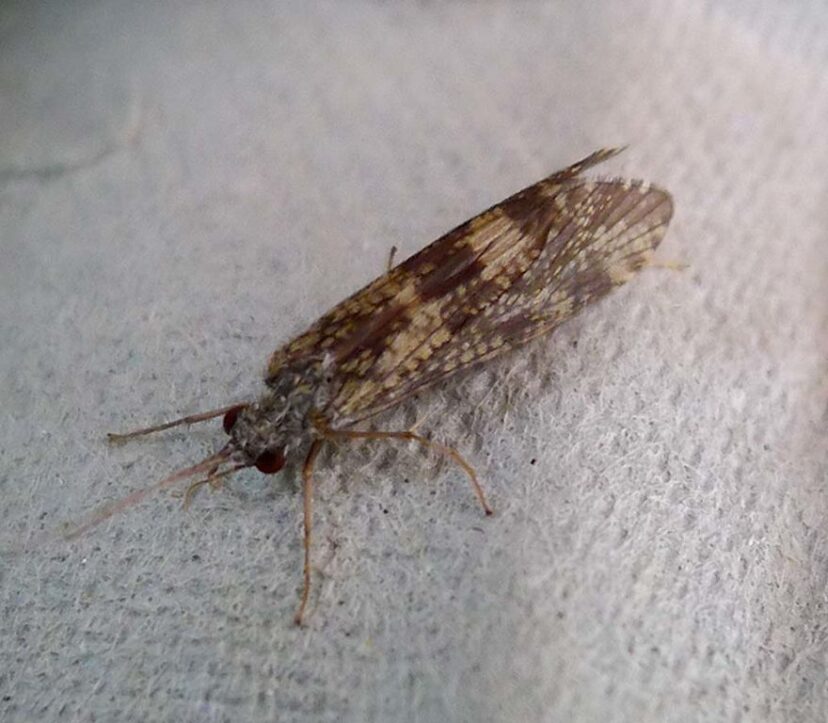
Caddis
Ah, the venerable caddis. This little bug might be the most dependable spring hatch in the Rockies. The famous Mother’s Day caddis hatch on rivers like the Arkansas gets the dry-fly season off to an early start.
Of course, high water can put a hatch down in no time. Adaptable anglers will carry the usual dry-fly caddis patterns, and a host of alternatives that will work should runoff start a bit early. For instance, a bead-head caddis nymph will get down to the trout when cold spring runoff starts to enter the system. During obvious hatches, industrious anglers will fish “crippled” versions of adult caddis. These flies imitate bugs caught in the surface film. Bigger trout, who have learned that spending less energy on a meal is important, will often rise to these flies.
No matter what, make sure your fly box is stuffed with a variety of caddis patterns in the spring.
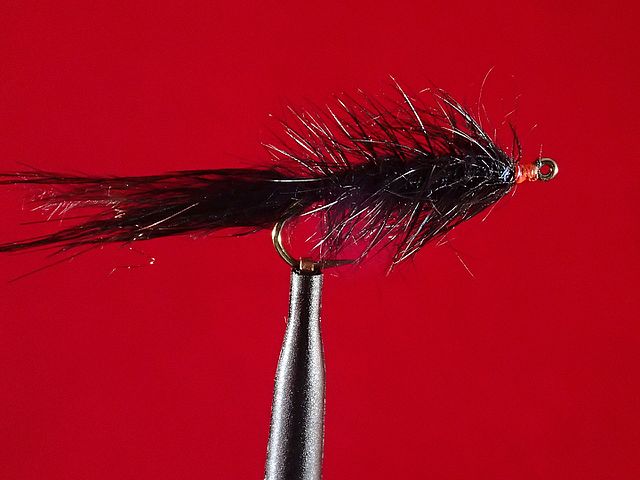
The Woolly Bugger
Often, the Woolly Bugger is the first fly we learn to tie. There’s a reason for this. This fly imitates a host of aquatic food sources. Depending on how it’s tied, it can imitate small baitfish. It’s also a reasonable proxy for leeches and aquatic worms.
During the spring, as runoff starts to push into the rivers, the ‘Bugger is noticeable and moves water. When fished against banks, even in murky water, it can draw the attention of hungry trout. In short, don’t leave home without it.
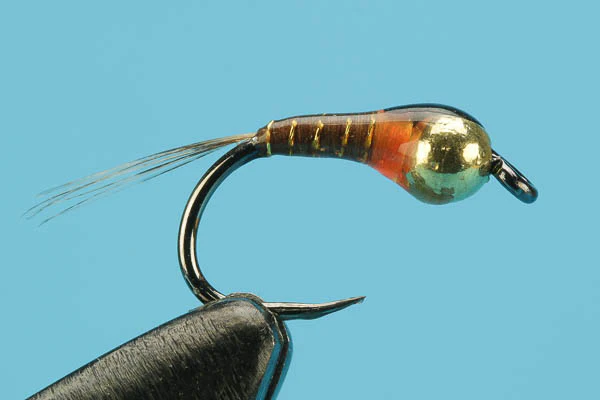
Perdigon nymph
The word “perdigon” is Spanish for “pellet.” Don’t think it references the pellet that hatcheries use to feed trout. Instead, think of a pellet used in an air rifle. It’s small and it’s heavy. Which means it gets down deep where trout are holding as water starts to rise in the spring.
The Perdigon is streamlined and usually tied with weighted wire or a weighted head. This helps it sink quickly. It’s great under an indicator or high-sticked through likely trout water. Many anglers use it as the point fly for a double-nymph rig. No matter how you use it, make sure there are a few in your fly box this spring.

The Girdle Bug
Fly tying is an impressionistic pastime. So, when you look at a Girdle Bug, you might be wondering what it’s supposed to imitate. Generally, Girdle Bugs imitate big, struggling stonefly nymphs caught in the current. The wiggly rubber legs coupled with the substantial chenille body can be irresistible to high-water trout.
Stoneflies, in the Rocky Mountain hatch calendar, generally follow caddis flies. Which means, as caddis are popping, stonefly nymphs are in the rivers and becoming available to trout. They’re also bigger and offer trout more protein for the effort.
Many nymphing anglers use the Girdle Bug as the top fly on a two-fly rig, about 18 inches to two feet above, you guessed it, a heavy Perdigon.
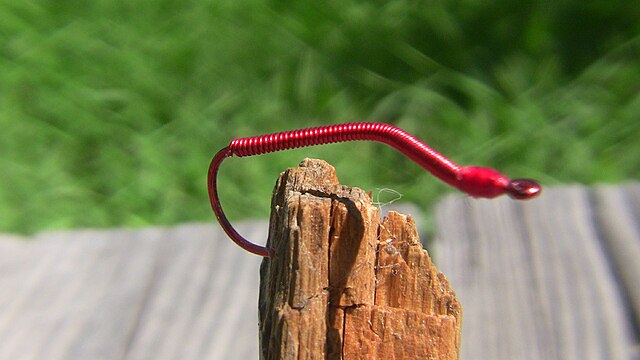
The San Juan Worm
For those who turn up their noses at fly fishing with a worm pattern, the joke’s on you. Worms are an important part of any trout’s diet. During the spring, when high water pushes against muddy banks, worms end up in the water. And trout eat them.
Again, this is a great fly to use as the top fly in a two-fly rig. And, yes, putting it about two feet above a Perdigon is a great idea.
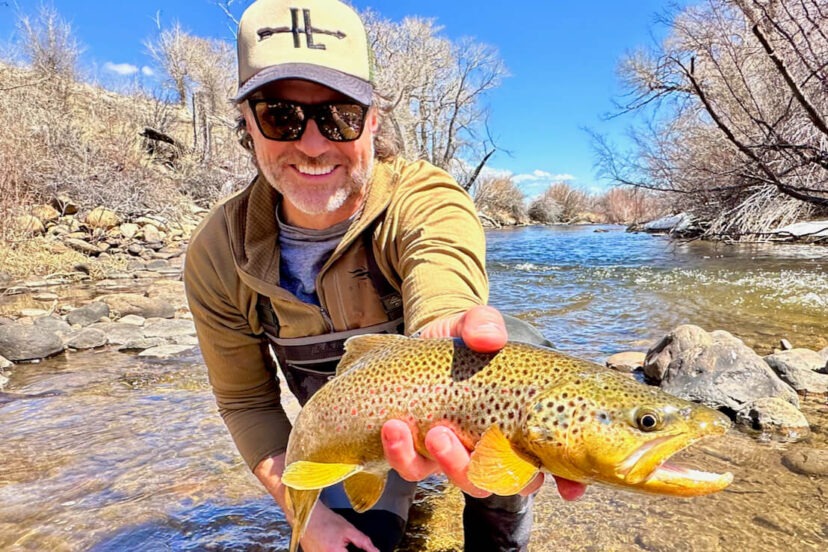
Final word
For ranch real estate owners or for those who are searching for ranches for sale in the Rockies, fishing for trout can be one of the reasons you live where you live. And spring is when the mountains come back to life. It’s when our rivers get a dose of new water, and when trout start to become active again.
Be prepared to meet the spring fly fishing challenges with the right flies. Understand that higher water requires you to be more thoughtful. It demands that you meet the trout on their terms. With the right flies, spring can be as productive as any other season. You just need to know what to use when you hit the water.
And, ranch properties and ranches for sale in the Rockies today will put you within easy reach of some of that great trout water this spring.

